#Medici the art of power
Text
She's a Maneater {Medici} Pt1?
Contessina de Bardi

Bianca de Medici
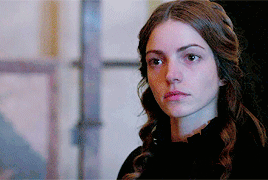
Lucrezia Tornabuoni
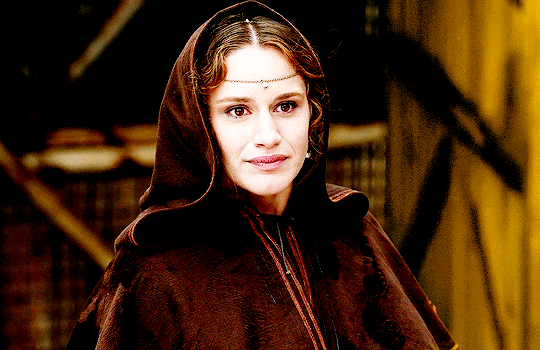

Clarice Orsini

#they're maneaters#medici#medici women#all these women slayed#clarice orsini#more than wife {clarice}#lucrezia de medici#Lucrezia Tornabuoni#contessina de bardi#mother of florence {contessina}#bianca de medici#women of the medici#i medici#medici the beauty and the power#medici the art of power#medici the magnificent#medici family#Spotify
9 notes
·
View notes
Text

They were supposed to be happy…
#francesco pazzi#novella foscari#francescoxnovella#francesco deserved better#novella deserved better#i medici#medici the magnificent#medici the masters of florence#medici the art of power#medici the beauty and the power#son of the renaissance#daughter of Venice#medici edit
15 notes
·
View notes
Text

Currently thinking about how the portrait of Isabella de’Medici was transferred from wood panel to canvas and then altered to fit Victorian beauty standards by a man named Francis Needham so that a buyer would be more attracted to it, and hundreds of years later we only know what Isabella really looks like due to Ellen Baxter, the conservator of the Carnegie Museum of Art in Pennsylvania, discovering that the cracks in the painting were smaller than cracks in old canvas usually are, thus leading to the discovery of the Victorian version of photoshop done to her-
(Victorian canvas transfer on the left, original wood panel on the right)
#occasionally art history brainrot hits#and when it does it hits HARD#fun fact I’m actually a descendant of the Medici family on my dad’s side#and I really wanna see Isabella de’Medici’s portrait before I die#art#art history#isabella medici#history#i think she looks much more beautiful in the pre-transfer version#she’s staring directly at you with absolutely no fear#it’s so powerful
8 notes
·
View notes
Text
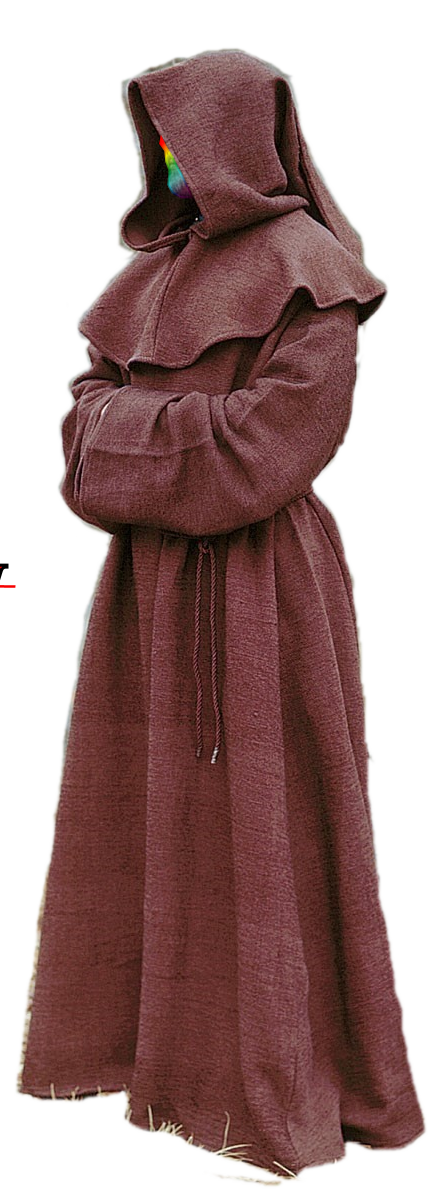
Hollow jinns
#The BLUTOPIA POWER PAC
# The Passenger Pigeon Party. (Now inc)
www.WHOXOHM.com
#magic#electricity#electric cars#electric vehicles#wall street#news#chocolate#energy#politics#environment#solar#roma#my art#artists on tumblr#illustration#digital art#fan art#art#solar energy#power#monk#light#lorenzo de medici#catherine de medici#lgbtq
1 note
·
View note
Text




Happy World Art Day! 🌍 🎨 At JSTOR, we're celebrating the vibrant tapestry of creativity that colors our world. From the studios of renowned masters to the cozy corners where emerging talents find their voice, let's honor the spaces that ignite imagination and the artists who bring them to life. Join us in celebrating the power of art to inspire, provoke, and unite us all.
Images:
Mihály Munkácsy. The Music Room. 1878. The Metropolitan Museum of Art.
Edgar Degas. Dancers in the Rehearsal Room with a Double Bass. ca. 1882-85. The Metropolitan Museum of Art.
Léon Cogniet. The Artist in His Room at the Villa Medici, Rome. 1817. Cleveland Museum of Art.
Jean-Alphonse Duplessy. Cobbler’s Quarters. 1860s. The Cleveland Museum of Art.
#jstor#world art day#artists#art#fine art#mihaly munkacsy#adolph menzel#edgar degas#leon cogniet#edited to correct a citation
133 notes
·
View notes
Text
Sword Catcher: Worldbuilding
Who rules Castellane?
Castellane is a city-state — it has its own government and royal family. Part of my inspiration for Sword Catcher was Venice during the Silk Road era, and families like the famous Borgias and Medicis. Castellane’s government consists of a royal family and a Council of Twelve — twelve families, each of whom holds a charter that gives them ownership over a certain kind of good that is traded through the continent of Dannemore. These are the Charter Families; they are the richest in Castellane, and Charters are passed down through families, like an inheritance — though the ruling family, the Aurelians, has the power to grant charters and also to take them away.
The Charter Families
The Uzecs have quite a bit of sway as the holders of the Wine Charter.
A popular man is Mathieu Gremont, who holds the Coffee and Tea Charter.
Fabulous Lupin Montfaucon always has the latest fashions, as appropriate for the Charter holder for fabrics.
Joss Falconet is an old friend of Prince Conor’s, and owns the Spice Charter. More on him later!
House Gasquet controls all the oil and perfume coming in and out of the city.
Lady Alleyne, the mother of Antonetta, is in charge of the valuable Silk Charter and makes sure she and her daughter are always in the finest silk dresses.
The Cazalet Family has owned the Banking Charter for so long, coins are often called “cazalets”.
House Roverge owns the Dye Charter. House Sardou has the Glass Charter,
House Raspail Timber, and Alonse Esteve owns the Horse Charter.
They have their meetings in the Dial Chamber, whose seats are arranged to look like the numbers on a clock.
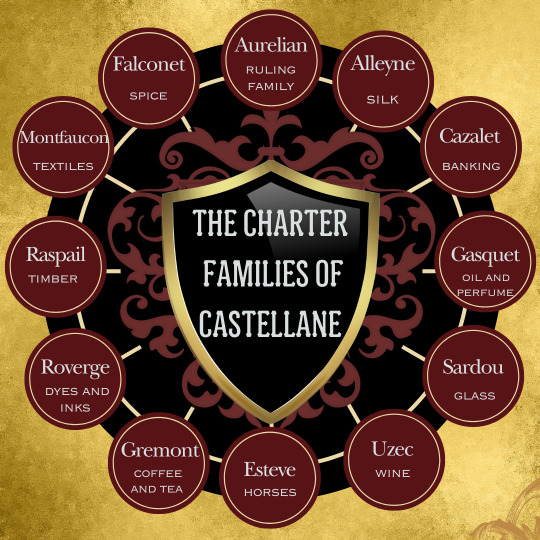
Sitting at midnight is House Aurelian, the Royal Family, whose charter is kingship. At these meetings the fates of cities and countries are decided with the stroke of a pen. It used to be the pen of King Markus, but as he has grown weaker with a mysterious illness, that pen has found itself in the hand of his son, Conor Aurelian…possibly the least responsible person in Castellane.
(Conor art by Sasha Coleman.)
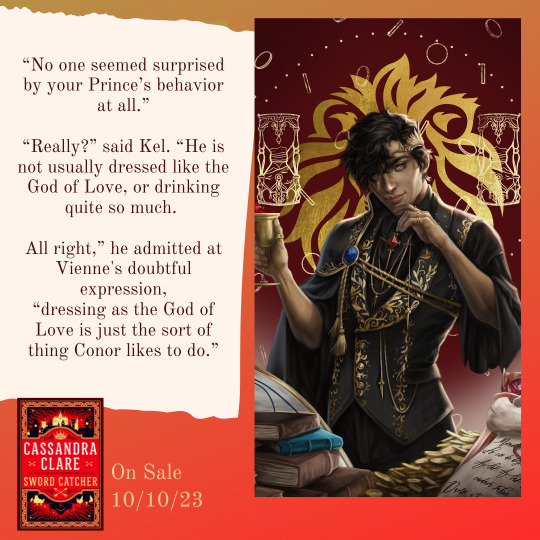
356 notes
·
View notes
Note
hi!! i’m a classics major and am so entranced by your art and how you interact with history and literature, it really inspires me and expands my brain all the time. SO spicy.
anyways, I was wondering if you’d be comfortable talking a bit about your degree (s) and how they’ve influenced your artistic/critical analytical processes??
oh man, I have exactly zero degrees. like a true jester, I went to a trade art school, so I don't even have an art related degree, I've got a certification of surviving hell completion
the way art and history interact for me is that a lot of it circles back to trying to find ways to talk about something. history doesn't necessarily repeat, but it often rhymes, haunts, and cannibalizes. some eras of history are equal parts history and a stage, and a stage serves as a place to say something without necessarily having to be in it. the bossism politics of the philippines rhymes with the faction politics of the late republic more often than it doesn't. watching the marcoses crawl back into power was like watching the medici return to florence. duterte said he was like julius caesar crossing the rubicon, and over 6,000 were murdered under his regime. somethings are the same.
a lot of it feels like a puzzle, and I like it when pieces come together. more often than not, there's something current going on that prompts me to look back into history for something comparable, either as a stage, or just to feel like I'm not losing my mind, that other people had to deal with this shit too.
I was a teenager when the original assassin's creed games were coming out, and I used to go to libraries with other fans and we'd just sit in the non fiction sections and read everything that was on a shelf, and then go outside or whatever and start talking about where the games diverged from history and try to figure out what the next game would do based on whatever we learned. and I just kind of. kept doing that even when I stopped playing the games because the story sucked ass, but because there's already a second intersection of fiction working along side historical analysis, it unlocks a bunch of other stuff in the back of my mind while I take notes on something.
the gore you read in the thebaid reminds me a lot of imperial chines torture literature, and now we've got imperial horror and while we've moved out of the ancient Mediterranean but it's a whole body of work that I'm now looking at while thinking about rome, and somewhere in there, I'll probably find some literary theme that's cool and I'll start researching whether or not someone's examined like. the renaissance from that lens. what does the gore mean. what happens when history unfairly maligns and scapegoats someone. what happens when a foundational sacrifice goes wrong.
one of the most gut wrenching things I ever read was about how rome took any record of spartacus' words and buried it, and now I spend too much time thinking about what words we put in the mouths of dead people.
#also if it was not obvious. i have unmedicated adhd. which is why my brain frequently works like a horrible pin ball machine#ask tag#anyway! i have no idea if this answered your question but this is more or less how my brain works when i make stuff
77 notes
·
View notes
Text

Marcel is a romanceable character in my interactive game Thicker Than
Name: Marcel "Medici"
Gender: M
DOB: Date Unknown, 1784
DOD: 31st December, 1813
Height: 183cm
Build: Lean
Skin: Black
Hair: Black
Eyes: Brown
Skills: Armed combat (fencing/bladed weapons), Language (Eng, Fre, Lat), Path of the Shadow
It's the man you saw at court, the one that wore the dark suit and sat as far away from the Night King as possible. He looks totally different here.
His stern, tailored suit is gone, replaced by a button down shirt, brown blazer, and a plaid peaked cap.
He looks almost twee.
"Lord Medici?"
"Please. Call me Marcel." He sits beside you and smiles.
The gesture looks so natural, so human, you could almost believe… if you didn't see the wickedly sharp hook of his canines.
Marcel is the vampire Lord Medici, a member of the Night Court. He rules over a small but prosperous domain that boarders with Blackwell's and is very interested in forming an alliance... of sorts.
Marcel has served on the Night Court for many years and is bored of playing things safe.
A lover of the finer things in life, Marcel can often be found enjoying music or art, and has been known to sponsor a variety of different creative works. He is a fencer and good at fighting with a blade, both in formal and informal settings. He can be charming when he wants to be. He can also be dangerous when he needs to be.
Marcel's vampiric powers manifest in control over the darkness, known to some as 'the path of the shadow'. He can teach these powers to a vampire eager to embrace the darkness as an ally.
85 notes
·
View notes
Text
The Medici family are synonymous with the Renaissance era and wielded unparalleled power in Florence and beyond, emerging from origins as bankers to become Europe's most influential dynasty. Their patronage of the arts catalyzed a cultural renaissance, nurturing talents like Michelangelo and Leonardo da Vinci.
However, their rule was also marked by political intrigue and controversy, including exile and assassination attempts. Despite these challenges, their legacy endures, shaping art, politics and commerce in Renaissance Europe and beyond.
16 notes
·
View notes
Text
THIS DAY IN GAY HISTORY
based on: The White Crane Institute's 'Gay Wisdom', Gay Birthdays, Gay For Today, Famous GLBT, glbt-Gay Encylopedia, Today in Gay History, Wikipedia, and more … February 25




1937 – Severo Sarduy, born in Camagüey, Cuba (d.1993) was a Cuban poet, author, playwright, and critic of Cuban literature and art.
He went to Havana in the mid-1950s to study medicine. Though he did not finish his studies, he retained a lifelong interest in science. While living in the capital he pursued his vocation for poetry and painting and came into contact with older writers such as José Rodríguez Feo and José Lezama Lima.
With the advent of the revolution in 1959, Sarduy became one of a group of young writers given the task of renewing Cuban literature. Sent to Paris by the government in 1960 to study art at the École du Louvre, Sarduy decided not to return to Cuba when his scholarship ran out a year later. Disaffected with Castro's regime and fearful of its persecution of homosexuals and the censorship imposed on writers, Sarduy never went home.
In Paris, he was connected to the group of intellectuals who produced the magazine Tel Quel, particularly to philosopher François Wahl, with whom he was openly involved.
Sarduy worked as a reader for Editions du Seuil and as editor and producer of the Radiodiffusion-Télévision Française.
In 1972 his novel Cobra won him the Medici Prize. He was among the most brilliant essayists writing in Spanish and "a powerful baroque narrator, full of surprising resources.".
As a poet, he was considered one of the greatest of his time. He was also a more or less secret painter; a major retrospective of his work was held at the Reina Sofía Museum of Madrid after his death. He died due to complications from AIDS just after finishing his autobiographical work Los pájaros de la playa.
Sarduy's posthumous Pájaros de la playa (1993; "Beach Fowl") is about a sanatorium for sufferers of AIDS, the disease that killed the author.


1942 – John Saul is an American author of suspense and horror novels. Most of his books have appeared on the New York Times Best Seller List.
Born in Pasadena, Saul grew up in Whittier, California. He went on to several colleges, variously majoring in anthropology, liberal arts and theater, but never obtained a degree. After leaving college, Saul decided to become a writer, and spent fifteen years working in various jobs while trying to improve his craft.
Prior to the start of his bestselling thriller career Saul had around ten books published under pen names, the first of which he wrote in one weekend after unexpectedly losing his job. His first book sale earned him just $200. Today he has over 60 million books in print.
In 1976, Dell Publishing contacted him and asked if he'd be interested in writing a psychological thriller. The resulting novel, Suffer the Children, appeared on all the bestseller lists in the United States and reached the number one spot in Canada. Cry for the Strangers was made into a film of the same name in 1982.
In addition to his novels, Saul has had several one-act plays produced in both Los Angeles and Seattle.
Saul lives part-time in the Pacific Northwest, both in Seattle and in the San Juan Islands, and has a residence on the Big Island of Hawaii. Saul is openly gay. He lives with his partner of 32 years, who has collaborated on several of his novels. He is a frequent speaker at the Maui Writers' Conference.


1947 – Jorge Donn was an internationally-known ballet dancer. (d.1992) He was best known for his work with the Maurice Béjart's Ballet company, and his participation as lead dancer in Claude Lelouch's film Les Uns et les Autres.
Jorge Donn was born in Buenos Aires, Argentina. He began to dance when he was 4 or 5 years old, then studied at the Colon Theatre school. In 1963, he arrived in Brussels to work in the Maurice Béjart company and soon became its principal dancer, entering into a twenty-year professional and personal relationship with Béjart.
Many of Béjart's works were created expressly for him: Bhakti (1968), Nijinsky, Clown of God (1971), Golestan, or The garden of roses (1973), Ce que l'amour me dit (1974), Notre Faust (1975), Léda (1978), Adagietto (1981) and others.
In 1976, Jorge Donn became artistic director of the Béjart's Ballet of the Twentieth Century company. In 1988, he founded his own company, L'Europa Ballet, which existed for a short time.
Jorge Donn died of AIDS on 30th November 1992 in Lausanne. Many choreographers created ballets as a tribute to him: Maurice Béjart (Ballet for Life), Denys Ganio (Tango... a rose for Jorge Donn), Carolyn Carlson (Homage for Jorge Donn), Grazia Galante (Masticando Sueños)


1950 – The Irish director Neil Jordan was born today. An Academy award-winning Irish filmmaker and novelist. He received the Academy Award for The Crying Game. As a writer/director, Jordan has a highly idiosyncratic body of work, ranging from mainstream hits like Interview With the Vampire to commercial failures like We're No Angels to a variety of more personal, low-budget art-house pictures.
Although in a conventional heterosexual marriage, unconventional sexual relationships are a recurring theme in this gay-friendly director's work, and he often finds a sympathetic side to characters audiences would traditionally consider deviant or downright horrifying. His film The Miracle, for instance, followed two characters who struggled to resist a strong, incestuous attraction, while The Crying Game made complicated, likable characters out of an IRA terrorist and a Transgendered woman. Vampire, like the Anne Rice book it was based on, focused on the intense sexual relationship of two undead men who murder humans nightly (although the pair never have sex, they are clearly lovers of a sort), accompanied by an equally lusty vampire woman who is eternally trapped in the body of a little girl. While Lestat (Tom Cruise) is depicted in an attractive but villainous manner, his lover Louis (Brad Pitt) and the child vampire Claudia (Kirsten Dunst) are meant to capture the audience's sympathy despite their predatory nature.

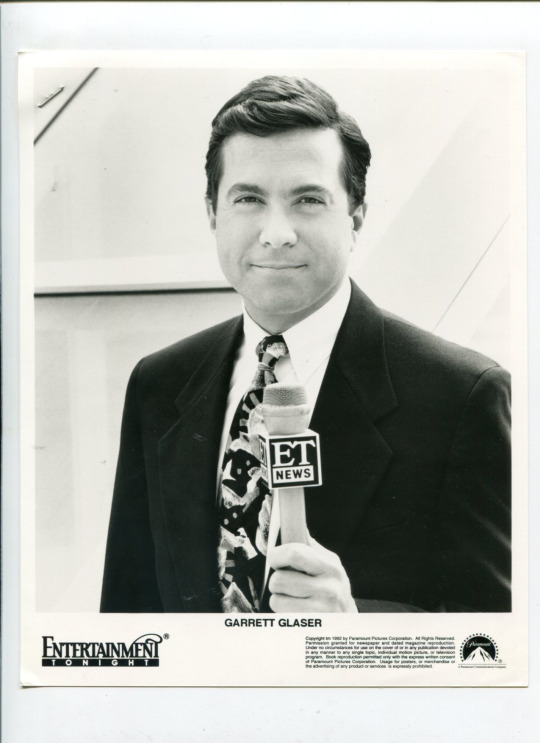
1953 – Garrett Glaser is a retired news reporter who was one of the first US television journalists to "come out" publicly as a homosexual.
His coming out occurred during the course of a speech he made before a large group of TV and radio executives at the 1992 convention of the Radio/TV News Directors Association being held in San Antonio, Texas. Although Glaser co-founded the Electronic Media Task Force of the National Lesbian/Gay Journalists Association (NLGJA) in 1990 and was later out, as well, to fellow journalists, he was not out to the public at large. That changed in 1994, when Glaser disclosed his sexual orientation during a live report on the "Channel 4 News" at KNBC-TV Los Angeles as he was reporting on the death of Elizabeth Glaser (no relation), an AIDS activist who founded the Pediatric AIDS Foundation.
Several weeks later, the Los Angeles Times published a story on the front page of its "Calendar" section about Glaser's status as one of the nation's few openly gay TV reporters.

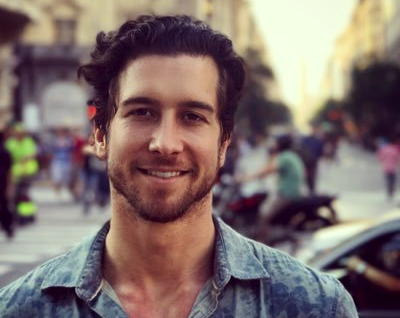
1989 – Evan Todd is an American actor and producer.
Todd grew up in Kissimmee, Florida. He finished his senior year of high school at the North Carolina School of the Arts in Winston-Salem and later graduated from the Juilliard School. Todd also studied at Yale School of Drama and London Academy of Music and Dramatic Art.
In 2007, Todd made his big screen debut as a student in the 2007 film Sydney White. He subsequently appeared in several television films and series such as Grumpy Cat's Worst Christmas Ever (2014), Switched at Birth and Jane the Virgin. In 2014, he originated the role of Kurt Kelly in Heathers: The Musical, when the rock musical had a production Off-Broadway. The following year, Todd co-produced the 2015 Broadway revival of Spring Awakening. A critical success, the rock musical, based on the German play Spring Awakening (1891) by Frank Wedekind, was nominated for both a Tony Award and a Drama Desk Award for Outstanding Revival of a Musical.
In 2016, Todd had a leading role in the comedy film 4th Man Out about a young mechanic who comes out to his straight buddies and to his family. The film received the Audience Choice Award for Best Dramatic Feature at Outfest, and was awarded the Audience Award for Best Narrative Feature at the InsideOut LGBT Film Festival. In March 2017, Todd joined the Broadway cast of Beautiful: The Carole King Musical as King’s songwriter first husband and writing partner Gerry Goffin.
Todd is openly gay. He is the co-founder of stART and artsINSIDEOUT, two summer arts empowerment programs benefiting students from his home town as well as children affected by HIV in South Africa.


2000 – On this date Henry Stuart Matis walked up to the steps of a Mormon church in Los Altos with a note reading "Do not resuscitate" pinned to his shirt, and shot himself.
He was a 32-year-old Gay man and devoted member of the The Church of Jesus Christ of Latter-day Saints, and after a lifetime spent struggling to reconcile the two, explained in a suicide note that "for the first time in over 20 years, I am free from my pains."
"As I believed that I was a Christian, I believed that I could never be Gay," he wrote. "Perhaps my death ... might become the catalyst for much good ... Your actions might help to save many young people's lives."
In the early morning, on the 10th anniversary of Matis' death, a group of local Mormons and others held a memorial vigil for Matis in Los Altos. Starting at Cuesta Park with songs and brief speeches, about 20 people then walked up Grant Road, carrying roses and candles. They ended up on the sidewalk in front of the LDS stake center on Grant Road in Los Altos, where they set up a small memorial display with an image of Matis' tombstone and stories about him and other Gay Mormons who have committed suicide.
Matis' body was found at the center, which serves as the headquarters for South Bay Mormon congregations, at about 7:30 a.m. on Feb. 25, 2000. Robert Rees of the Santa Cruz stake, who served as a spiritual adviser to Matis, said the event was meant "to honor a good man who eft life much earlier than he should have, whose passing was tragic but whose message was one of hope to other people." According to a statement on its Web site, the Mormon church believes that acting on "same-gender attraction" is a sin and Gay church members must remain celibate.
George Cole, a San Francisco resident who is Gay and serves on the executive committee of Affirmation, a support and advocacy group for Gay and Lesbian current and former Mormons, said he didn't know Matis personally but has "lost too many very good friends to suicide. "I know what it is like to seriously consider taking your life," he said. Cole said he left the Mormon church in 2002.
"I chose happiness and fulfillment at the cost of not having the church in my own life," he said. Matis died just a couple of weeks before Proposition 22, the anti-Gay marriage measure in 2000 that preceded 2008's Proposition 8, went before voters, and his death was often portrayed as a political statement, though Matis did not mention the initiative in his suicide note.

2007 – On this date the 79th Academy Awards were hosted by Ellen DeGeneres in Hollywood.



16 notes
·
View notes
Text


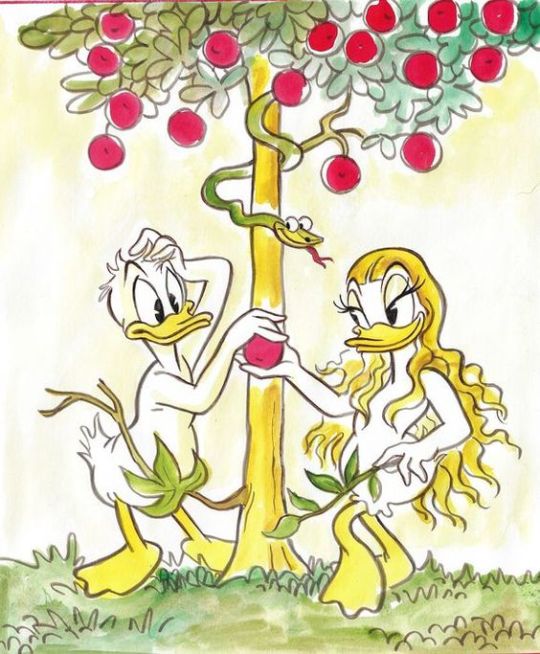
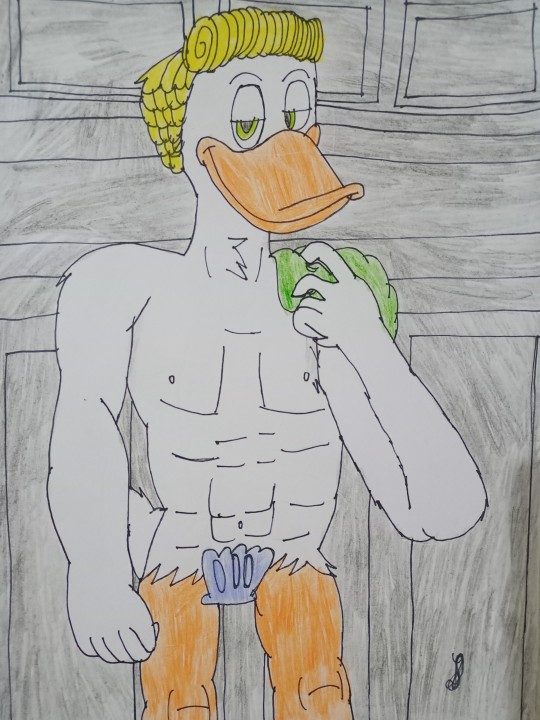
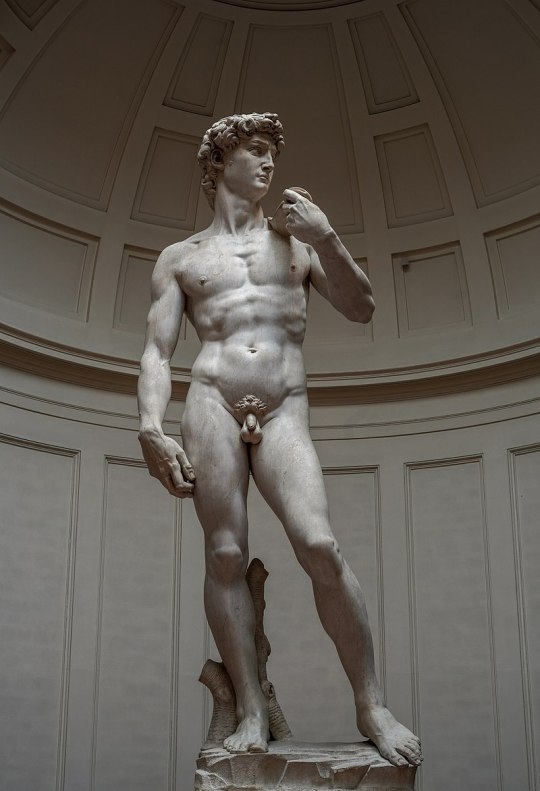
Duckvember - Human, Loved and Nude Duck (Ducks) - Donald and Daisy as Adam and Eve and Gladstone Gander as Michelangelo's David
No more old Ducklooney. XD Joking aside, I've always had a love for history and good old art, so I drew on these leftover themes from Duckvember as redraws from famous works.
The first drawing represents Donald and Daisy Duck as Adam and Eve, as the first humans, that is, as the first ducks. According to the Book of Genesis from the Bible, Adam and Eve lived in Paradise, that is, in the Garden of Eden, until they took the fruit from the tree of knowledge and were then forced to leave Paradise. Yes, they obeyed the Serpent, or Lucifer, who prompted them to commit the first sin and disobedience to God. Whether the red fruit is an apple or a pomegranate or something else, it is not known, but I certainly drew it as a red fruit that represents the fruit of knowledge, as I also drew the background of Eden, and represented the snake as Evronian (an enemy alien duck from the Paperinik New Adventures comics) , since they are certainly evil. Yes, I also drew as a redraw from the genius artwork painted by Tony Fernandez, one of the genius artists for Donald Duck comics. Poor Donald and Daisy, what have they gotten themselves into.
Another drawing presents Gladstone Gander as the Human Duck, in the pose of Michelangelo's David. David was a Biblical figure and king of Israel who reigned in the late 11th and early 10th centuries BC and was the writer of Psalms, Biblical songs. Michelangelo Buonarroti, who was an excellent Renaissance artist in the late 15th and early 16th century AD, created a statue of David from 1501 to 1504 and that statue represented the power of the Medici family. I always imagined a sexy Gladstone so I drew him as Michelangelo's David standing in Florence as a future statue pose. Although I have not managed to draw a fully human duck, although Gladstone is half goose, it is still strange to me that even though ducks look more humanoid, they have fully human legs. Anyway, this is my first time doing this, so I apologize for that. Yes, I put a shell, because I don't like to show indecent body parts, and it should be censored for children.
This is a joke after all. I hope you like these drawings and these ideas and surprises like this. Feel free to like and reblog this. And it is not allowed to use such ideas without my permission and without mentioning me.
#my fanarts#duckvember#art#artists on tumblr#michelangelo#adam and eve#duckverse#donald duck#daisy duck#david#gladstone gander#ducktales#duck comics#donsy#donald x daisy#bible#genesis#history#duckverse in history#renessaince#tony fernandez#disney duck comics#disney ducks#disney goose#disney duckverse#my fanart#my style#fanarts#fanart#my artwork
24 notes
·
View notes
Text
Cosimo doing literally anything
Contessina: This is why we can't have nice things
#cosimo#contessina#i medici#medici incorrect qutoes#medici the magnificent#medici the art of power#lorenzo the magnificent#giuliano de medici#clarice orsini
29 notes
·
View notes
Text

Francesco left a letter for Novella.
He was confident he would prevail and survive. If that outcome happened he would go to Venice himself and convince his wife to return with him to Florence. He would ask for forgiveness for his accusations and his actions. They didn’t matter now, Lorenzo did not matter and he would be ruler of Florence after Jacopo.
But on the off chance that he did not survive, Francesco wrote a letter to Novella and stuffed it in his desk.
After the demise of the Pazzi, and the sacking of their homes and banks, the letter made it’s way to Clarice. It had been found in Francesco’s desk, but was addressed to Novella, and so the servant who had found it had given it to Clarice.
Clarice kept the letter a secret. Mainly from her husband. In his rage and mourning she doubted the letter would survive if he knew of it. While she too felt the betrayal of the Pazzi and the loss they had inflicted, a part of her felt that the last words of Francesco Pazzi deserved to be heard by whom they were intended for.
Giuliano after all had been allowed no such honor.
So Clarice sent a trusted messenger to deliver the letter to Novella in Venice. When the letter finally reached Novella she sat and stared at it for nearly an hour. The news of her husbands death had come to her along with the letter. She loved her husband and she had cried and mourned for him even though he hurt her. And now he had left her something. She almost didn’t open it. What would there be for him to say?
But she needed to know. She needed to know what he said.
The first thing Francesco does in the letter, is apologize for his actions, and for banishing her from his side. He hates that he hurt her, even if he could not help it. He knew that Jacopo had gotten into his head, and yet he could not stop himself from being eaten away by the plots his uncle had planted. He would go on to say that if he was successful in his venture, she would probably never see this letter. That he would leave for Venice the very moment he could, and be at her side. He needed her. He would be the ruler of Florence one day and she would be his queen.
He would take responsibility of what happened between them. What may or may not have happened between her and Lorenzo would be of no consequence now. But he would note, that, those thoughts planted by Jacopo were no the only reason he sent her away. He sent her away partly because he knew what he had to do to the Medici. He knew that was his path and if she was around, he might not have followed it through. Or worse, if he failed and she was still in Florence, still with him, she may have been implicated and he could not allow that. So he had to send her away.
Francesco goes on to state that if he fails in his venture he would be dead long before this letter reaches her, if it ever does. But if this letter by some miracle does reach Novella after his demise, he wanted her to know that weeks earlier he had sent a private sum of money to her father that would go to her if he were to die. He would let her know that while their marriage did not end on the best of terms, she gave him peace. She gave him a chance to have a life that he never thought he would be worthy of, and he is sorry that he threw it away.
He wanted her to know that his lasts thoughts were of her.
That he would always dream of her.

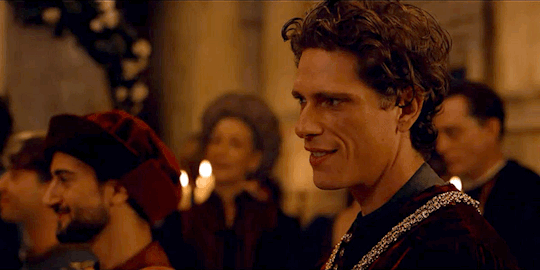
#okay….i made myself cry#novella#francesco#novella foscari#francesco pazzi#novella and francesco#i medici#pazzi#foscari#medici the magnificent#lorenzo de medici#medici masters of florence#medici the art of power#medici the beauty and the power#they deserved better#daughter of Venice#son of florence#medici headcanon
15 notes
·
View notes
Text
Well, looks like we now have another possible "Rings of Power" season 2 spoiler that wasn't as accurate as we thought. Another account that also not only shares spoilers but more behind the scenes things including the concept art from season 1 is saying they heard the character Calam Lynch is playing is not the one Fellowship of Fans said previously. Putting behind a cut for the major spoilers but I know a lot of fans are going to be disappointed if it's true, though I'm ok with it likely because I'm a Haladriel shipper and I personally didn't see Calam in that role anyway. LOL So again the actual spoilers will likely start coming May 14th when Amazon has their May Upfront presentation.
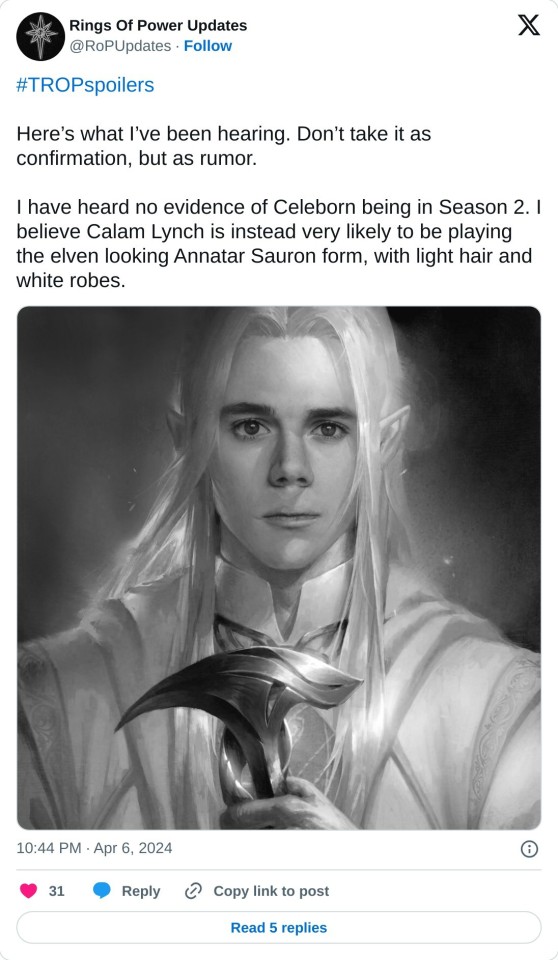
The "Rings of Power Updates" account it saying they've heard nothing about Celeborn being in season 2 at all and actually think no one is playing that role as he hasn't even been cast yet, similar to Anarion. Instead they think Calam is playing the Annatar version of Sauron. If others didn't see it actually was confirmed that Gavi Singh Cherra isn't playing Annatar either and it was a fake spoiler Amazon created to catch who in the crew was leaking these spoilers. However, there was possible spoilers posted on Reddit too that Calam's character was actually going to be Sauron but we all took that to mean Sauron/Halbrand was going to pretend to be Celeborn to trick Galadriel. This whole thing fits too if Calam is actually Annatar instead and ends up being Sauron/Halbrand, and still fits what FOF head about Calam as he'd still be an elf in Eregion and have similar hair and clothes to Celeborn. Plus, Charlie Vickers and Calam even do look a bit alike, especially when Charlie was in "Medici", that some of us including me wondered if Calam was going to be Mairon (which supposedly Charlie did film flashback scenes as Mairon for s2). This would also mean the chemistry screen test Calam did with Morfydd wasn't for Galadriel/Celeborn, but actually still Galadriel/Sauron just like Morfydd and Charlie had a chemistry test before season 1. So in the end it's another form of Haladriel/Saurondriel.
Personally too I did post as well when FOF posted about Calam being Celeborn last year that I thought he was too young and actually was hoping for a mid to late 30s actor to play Celeborn and someone who looked different from the LOTR movies for a change. So if this is true I guess that might be case as Celeborn possibly won't be on the show till season 3 at the earliest.
Again we'll know more once the official spoilers start coming from Amazon and the US media, but I can see if this is true Calam is Annatar how FOF could've gotten it mixed up that he was Celeborn.
#the lord of the rings#the rings of power#spoilers#calam lynch#celeborn#annatar#galadriel#haladriel#halbrand#sauron#charlie vickers#morfydd clark#mairon#saurondriel
9 notes
·
View notes
Text

#Head Mass Distinxion
#2 High Heavens
#The BLUTOPIA POWER PAC
# The Passenger Pigeon Party. (Now inc)
www.WHOXOHM.com
#capitalism#electricity#electric cars#electric vehicles#wall street#chocolate#news#energy#environment#politics#magic#art#artists on tumblr#us elections#election 2024#biden#republican#solar#power#2024#medici the magnificent#new york#breaking news#money#lgbtq#spain#dutch#gen z
1 note
·
View note
Text
Astrology: What is it? Why is it so misunderstood?
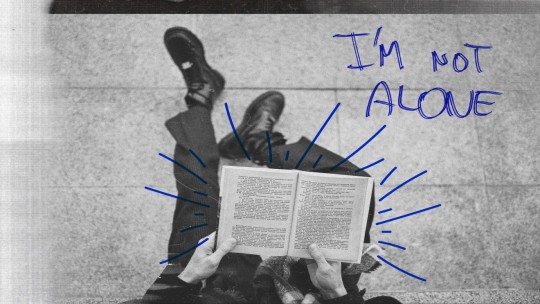
Astrology can change your life. It did mine. Astrology illuminates the secret corners of the self, provides a key to understanding others, contributes a useful method for scrutinising relationships, and even offers a glimpse into the future. Beyond that, as with all great areas of knowledge, astrology has the power to alter perception. Once you know something about it, you never see the world in the same way again.
Astrology was and will be a field of conflicting views, since its place in the world is not that clear. There are those who accept and believe it, those who reject it as gibberish and nonsense for people of low intellectual capacity, and those who are skeptical and search to understand what really lies behind the veil of mass consumption Astrology. I consider astrology a tool — an objective tool — for understanding self, assessing relationships, examining your potential, and even making some basic decisions.
What can Astrology teach us? The most important thing of all, ourselves! Through our horoscope we can see the positive and negative elements of our personality. Having the knowledge of our attributes, we can work on them and become better people. We can learn the characteristics of the people we keep in our company and understand them, instead of blaming them for what they are. We can decide when is the best time to do something or to avoid something unpleasant. We can also choose to divert the dynamics of an event in a different form.
Astrology above all is a source of self-knowledge. It is a symbolic language that tries to interpret the different aspects of life. This is the reason why there are many fields in Astrology, with differences and similarities among them. There is Natal Astrology, Political Astrology, Karmic Astrology, Draconic Astrology, Esoteric Astrology, Horary Astrology and others, each one is special in its way and worth of study.
Every day, when we finish up reading the articles in newspapers or magazines, we take a peek at the forecasts made for the zodiac signs. Sometimes, we start discussions with people by asking them what their zodiac sign is. There are people who exaggerate and consider Astrology as Magic! There are also skeptical people who wonder how it is possible for the stars to influence someone’s life from so far away. All this happens because Astrology is a misunderstood science. Really, why is this happening?
Legend has it that Sir Isaac Newton, widely considered the greatest genius of all time, may have explored astrology. Newton had a complex, curious mind. In addition to inventing calculus and discovering the universal law of gravity, he was interested in alchemy (the quest to turn ordinary metals into gold), the Bible, and astrology. When his friend Edmund Halley (after whom the comet is named) made a disparaging remark about it, Newton, a conservative Capricorn, shot right back, “Sir, I have studied the subject. You have not.” Or so the story goes.
Like every other astrologer, I like to think that story might be true. After all, astrology has faded in and out of fashion, but it has never lacked followers. Catherine de Medici had Nostradamus as her astrologer, Queen Elizabeth I consulted John Dee, and other astrologers advised Napoleon, George Washington, J. P. Morgan, and Ronald (and Nancy) Reagan. Yet in all that time, no one has provided a satisfying explanation as to why astrology works. Over the centuries, proponents of the ancient art have suggested that gravity must be the motor of astrology . . . or electromagnetism . . . or the metaphysical “law of correspondences.” Carl G. Jung summarized that view when he wrote, “We are born at a given moment, in a given place, and like vintage years of wine, we have the qualities of the year and of the season in which we are born.
I don’t know why astrology works, any more than Sir Isaac did. But I can assure you that it does work. The pattern that the planets made at the moment of your birth — that is, your birth chart or horoscope — describes your tendencies, abilities, challenges, and potential. It doesn’t predict your fate, though it does make some fates more easily achievable than others.
Today most professional astrologers have two theories to profess:
a) The law of "Cause and Effect"
The planets, the Sun and the Moon influence us through as-of-yet undetermined cosmic energies. For example, gravity, or the light of the Sun, sent to earth either directly or reflected from the Moon or the planets – such energies might possibly, in theory at least, have some effect on human life, an effect whose “ebb and flow” could be measurable through the planetary positions at the moment of an event, such as a person’s birth. Depending on the place we were born, this energy was imprinted within us, like when scientists take earth or ice samples to find clues on the activity of the period they are investigating.
b) The Esoteric Theory
The modern basis of this theory is Carl Gustav Jung’s "Theory of Synchronicity". Though C.G. Jung is normally considered to be the “father” of synchronicity, the idea is in fact hardly a child of the 20th century. Towards the end of the 18th century, the German philosopher Gottfried Leibniz, without the aid of the discoveries of quantum physics, developed a theory which in many respects is almost identical to Jung’s synchronicity, at least as far as that which is of greatest interest to astrologers is concerned. Leibniz called his theory “pre-established Harmony”.
According to this theory, the planets are not seen as “causes” of earthly “effects”, but rather, the cosmos is seen as an “entirety” in which each and every part has an intimate, mysterious relationship to every other part. Any change in one part will always be accompanied by a corresponding change in another part. Yet these changes do not follow each other sequentially in time – such a sequence of events would suggest “cause and effect”. Instead, the changes occur simultaneously (Synchronicity), and thus, do not fit the “cause-effect” model.
WHY ASTROLOGY IS SO MISUNDERSTOOD?
First of all a blame falls on the Media, because they approach Astrology with generalities and platitudes, mostly on television shows or magazines, and in such a way, that any kind of seriousness from a fairly complex system which actually Astrology is, is lost. You underestimate i.e. the Art of Synastry by just saying: "Oh, My dear friend, you are a Leo so you are a perfect match for a Sagittarius"!
Astrology also suffers a lot from its own representatives. Astrologers are presented (and sometimes they do this intentionally) as caricatures. It seems difficult for the everyday man to imagine an Astrologer without fancy clothes and a crystal ball to forecast the future!

“Anyone can be a millionaire, but to become a billionaire you need an astrologer" J. P. Morgan
Astrology is not a ‘science’ in the classical sense of the term. It certainly borrows several elements from homologous sciences (i.e. astronomy) but it can’t prove mathematically what it is stated, especially on the subject of forecasts. However, it is neither an ‘art’ because Astrology is based on and moves in parallel line with Science.
Astrology is not a religion to believe in. However, if someone scratches the surface and looks deep underneath, he or she would learn to trust Astrology because it really works! A lot of people are wondering how astrologers are able to know personal things that nobody else knows, by simply looking at their chart!
Let’s set some things straight, Astrology CANNOT tell you the winning numbers for tomorrow’s lottery drawing, but it will help you find an auspicious time to start a business. Astrology cannot tell you with certainty whether you will marry next year or not , especially if you don't want to get married.
Any astrologer who would make predictions concerning the death of another can hardly be considered a serious member of his profession, and should probably be avoided for a number of reasons, one of which is the simple fact that there are so many non-astrological factors which must be taken into account when dealing with such decisive events as is death. In addition, it is ethically irresponsible to make dire predictions which may end up becoming “self-fulfilling prophecies”, though I am aware that such forecasts are made all-too often during astrological consultations.
I will have to underline a hub point of Astrology which is a source of several confusions; forecasts. The future is not preconceived, but we can see its trends and dynamics. An event will come out sooner or later but we can't predict how strong its dynamic will be, we can only suspect, so when we do personal forecasts we always develop a range of possible results. This is why a forecast is a preparation for what is to come, so that we are ready to cope up with the events in a most positive way. When someone wants to consult an astrologer, he or she must be prepared for the fact they probably have a wrong time of birth. In this case, some events will occur in different times than the forecast said. In this case you do not blame the astrologer for being a charlatan!
At this point we observe the following phenomenon: several times when someone has a hard aspect and has difficulties in his life, he acts as if the world is about to be destroyed. If someone reads an article or when he visits an astrologer, he paralyzes when he hears those things that make his life difficult, we can come to the conclusion that he hasn’t worked with his inner self. It's impossible to check his lower self, thus becoming a pawn to the planet which causes difficulties to him or her. Another category of people are those who reject Astrology no matter what they hear, just because it’s not what they wanted to hear. Another category of people is just not ready to accept the prediction they hear.
There is something important you must know; the astrologer is not a clairvoyant nor a magician. Learning Astrology involves countless hours of study, and to write a single prediction requires a lot of time on a computer. The astrologer's familiarity with technology is more than necessary, it is the only way he or she can work.
BUT THE ZODIAC SIGNS DO NOT CORRESPOND TO THE CONSTELLATIONS?
Here comes the confusing part: The signs of the zodiac and the constellations that share their names aren’t the same. The signs are divisions of the ecliptic, each exactly one-twelfth of the total length — 30 degrees. The constellations have nothing to do with the signs.
The signs, the constellations, and the precession of the equinoxes
Thousands of years ago, when the Babylonians were establishing the principles of astrology, the constellations and the signs of the zodiac were in alignment. On the Vernal Equinox (the first day of spring), the Sun was “in” the constellation Aries: That is, if you could see the Sun and the stars simultaneously, you’d see the Sun surrounded by the stars of the Ram. In those happy days, the signs and the constellations coincided.
Alas, this is no longer the case. On the Vernal Equinox today, the Sun shows up amidst the (dim) stars of Pisces — a very different kettle indeed.
The reason for this shift is that the Earth wobbles on its axis, which traces a circle in space like the spindle of a spinning top. As the axis shifts, the constellations seem to slip backwards. The amount of slippage over a human lifetime is minuscule, but over generations it adds up. As a result, every equinox takes place a little earlier in the zodiac than the one before. This process is called the precession of the equinoxes. It explains why the vernal equinox, which used to occur in the constellation Aries, now takes place in Pisces.
When the equinox moves back even further, to the constellation of the Water Bearer, the Age of Aquarius will officially begin. Astrologers differ about when that will be. Some are convinced that it’s happening now. Others believe that it’s decades — or centuries — away. Eventually, the cycle will begin again. Around the year 23800, the Vernal Equinox will return to Aries, and astrologers will be able to skip this entire explanation. Meanwhile, constellations of the zodiac and the signs of the zodiac aren’t the same.
Skeptics who attack astrology — and for some reason, these wary souls can be amazingly hostile — often point to the changing position of the constellations and the precession of the equinoxes as proof that astrology is bogus. The truth is that astrologers are well aware of this phenomenon. They consider the constellations as signposts and little more. What matters is the division of the ecliptic. The stars, glorious though they are, have nothing to do with your sign.
HOW DOES ASTROLOGY WORKS?
The tool that we have to work with, is the Chart or Horoscope. Depending on what we want to look for, we use the appropriate chart. Through the study of the chart we see our features, our skills, our interaction with others, as well as coming events.
Let’s see some examples of the charts we use in Astrology:
Natal Chart: This is the Basic Chart (the most important) we use. In this chart we can see the person and we can say this is his identity.
Draconic Chart: A chart in which we see the past experience, if we accept the reincarnation theory, or all of our genetic predispositions.
Progressed Chart: A man does not stay stagnant and the same happens in his Chart, where we can see his evolution over time.
Synastry chart: Two people come closer and through the analysis of this chart, we can see whether they can find common ground.
Solar Return chart: The so-called annual chart. This chart is casted on a person’s birthday and provides the trend of the year from his birthday to his next birthday.
Lunar Return chart: The so-called monthly chart. This chart is casted the day Moon returns to the native's natal position. This horoscope shows us the trends of the current month.
Horary Chart: This chart is casted at a specific time to answer a given question.
#astrology#zodiacsigns#horoscope#astrology blog#astrology chart#astrology tumblr#astrology transits#astrologyposts#personality
8 notes
·
View notes